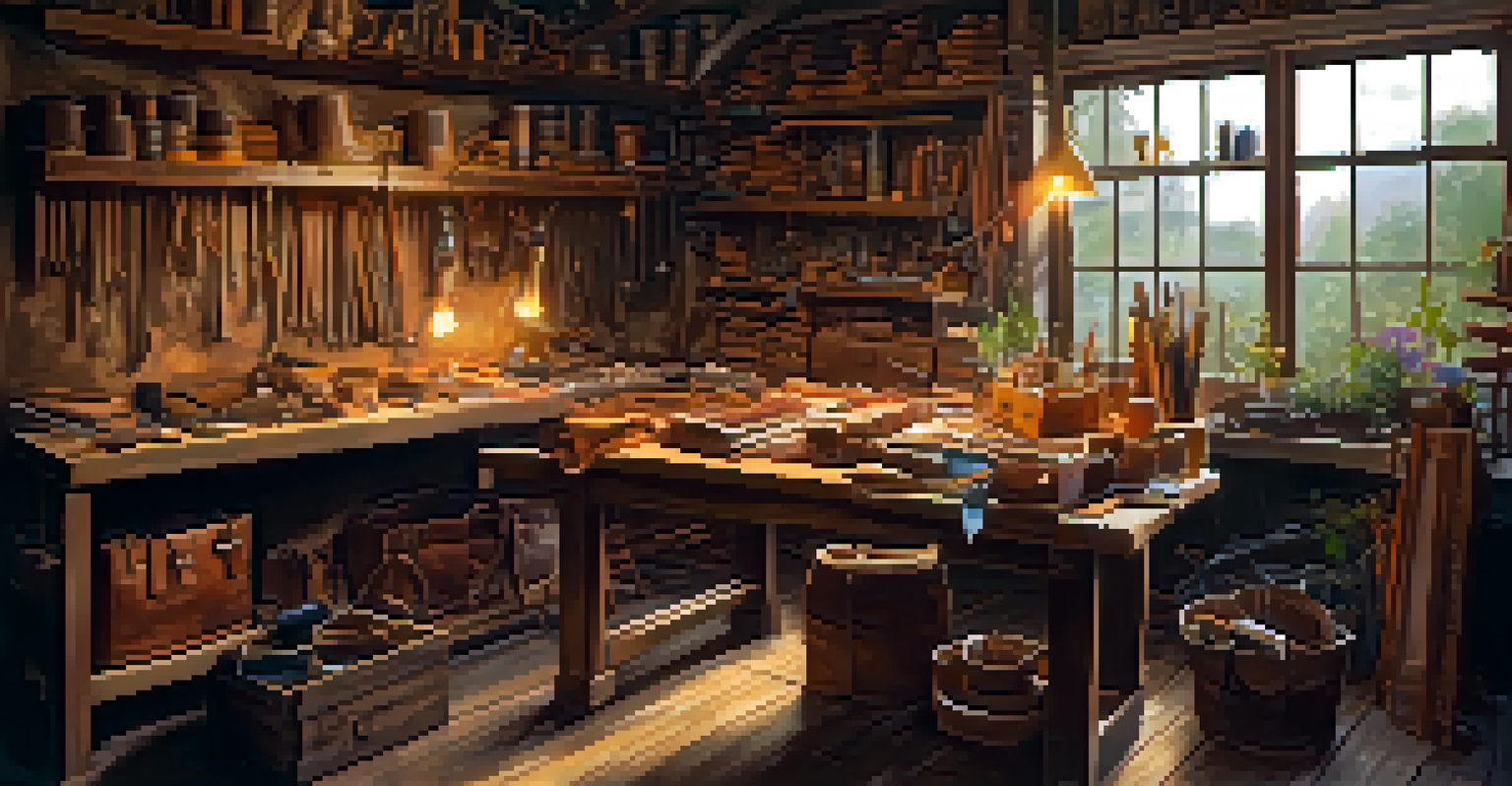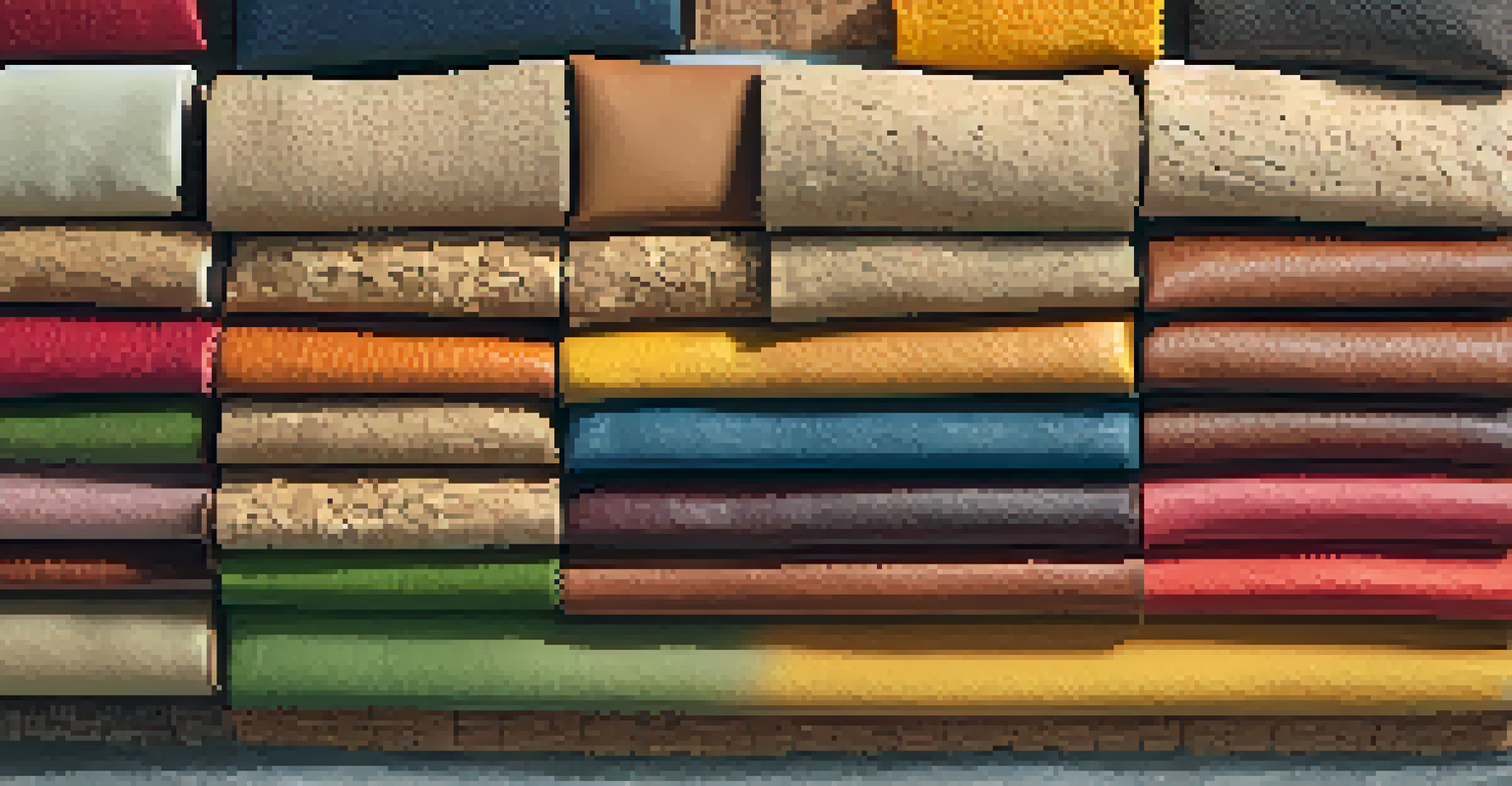Sustainable Leather Crafting: Choosing Eco-Friendly Options

Understanding Sustainable Leather: What Does It Mean?
Sustainable leather refers to materials that are made with minimal environmental impact. This includes ethical sourcing and reduced carbon footprints throughout the production process. It's not just about the leather itself; it's about the entire lifecycle—from animal welfare to the end product.
The greatest threat to our planet is the belief that someone else will save it.
To put it simply, think of sustainable leather as the eco-conscious cousin of traditional leather. It’s made from responsibly sourced animal hides or alternative materials that don’t harm the planet. This means you can enjoy high-quality products while also being kind to the environment.
By choosing sustainable leather, you're supporting practices that prioritize the well-being of both animals and ecosystems. This shift towards sustainability is more than just a trend; it’s a movement towards a more responsible way of crafting and consuming leather goods.
Types of Eco-Friendly Leather Alternatives Available
There’s a growing variety of eco-friendly leather alternatives on the market today. These include options like cork leather, which is harvested from the bark of cork oak trees without harming them. Another exciting alternative is mushroom leather, made from mycelium, the root structure of fungi.

These materials offer great versatility and durability, often mimicking the look and feel of traditional leather. For instance, pineapple leather, made from the fibers of pineapple leaves, is not only stylish but also biodegradable. This opens up a world of possibilities for conscious consumers.
Sustainable Leather Defined
Sustainable leather focuses on minimal environmental impact through ethical sourcing and responsible production practices.
By exploring these alternatives, you can find products that align with your values without sacrificing quality or aesthetics. Plus, supporting these innovative materials helps drive demand for sustainable practices in the fashion industry.
The Importance of Ethical Sourcing in Leather Crafting
Ethical sourcing is a crucial element in sustainable leather crafting. It ensures that the materials used come from suppliers who respect animal welfare and environmental standards. This means avoiding practices that harm wildlife or contribute to deforestation.
Sustainability is no longer about doing less harm. It's about doing more good.
When you choose ethically sourced leather, you're also supporting local communities and economies. Many artisans prioritize fair labor practices, ensuring that workers are treated well and compensated fairly. This creates a more equitable system that benefits everyone involved.
Ultimately, ethical sourcing helps cultivate a transparent supply chain. By knowing where your leather comes from, you can make informed choices that reflect your values and support a sustainable future.
How to Identify Sustainable Leather Products
Identifying sustainable leather products can be as straightforward as looking for certifications. Labels such as the Leather Working Group (LWG) and Global Organic Textile Standard (GOTS) indicate that the leather meets specific environmental and social criteria. These certifications provide peace of mind that your purchase is responsible.
Another tip is to research the brand's values and practices. Many companies will proudly showcase their commitment to sustainability on their websites or product tags. Look for brands that transparently share their sourcing methods and production processes.
Innovative Leather Alternatives
Eco-friendly leather alternatives, like cork and mushroom leather, provide stylish options while supporting sustainable practices.
Lastly, don’t hesitate to ask questions! Whether in-store or online, reach out to brands to learn more about their sustainable initiatives. This engagement not only educates you but also encourages companies to prioritize eco-friendly practices.
The Role of Innovation in Sustainable Leather Crafting
Innovation plays a pivotal role in the evolution of sustainable leather crafting. Researchers and designers are continuously exploring new materials and techniques that minimize environmental impacts. This includes developing synthetic leathers that are derived from recycled plastics or bio-based materials.
For instance, some companies are now producing leather-like fabrics using waste from the food industry, such as apple peels or orange peels. This creative approach not only reduces waste but also provides a unique story behind each product. It’s a great way to turn something that would typically be discarded into a fashionable and functional item.
These innovations are changing the landscape of leather crafting, making it more sustainable and accessible. As consumers become more aware of their choices, the demand for such innovative products will only grow, driving further advancements in the industry.
Caring for Sustainable Leather Products
Caring for sustainable leather products is essential to prolong their life and reduce waste. Just like traditional leather, eco-friendly options require regular maintenance to keep them looking their best. This often involves cleaning with gentle products and conditioning to retain moisture and prevent cracking.
It's also important to store your leather items properly. Keep them in a cool, dry place away from direct sunlight to prevent fading and damage. Using breathable dust bags can help protect them from dust while allowing air circulation.
Importance of Ethical Sourcing
Ethical sourcing promotes animal welfare and fair labor practices, creating a transparent supply chain for sustainable leather products.
By taking care of your sustainable leather goods, you not only extend their lifespan but also maximize the positive impact of your eco-friendly investment. This habit reinforces the sustainable philosophy of quality over quantity.
The Future of Sustainable Leather Crafting
The future of sustainable leather crafting looks promising as more consumers demand eco-friendly options. This shift is prompting brands to innovate and adapt, leading to a diverse range of sustainable leather products. With advancements in technology and materials, we can expect even more exciting developments in the coming years.
Moreover, as sustainability becomes a key consideration for consumers, companies are increasingly held accountable for their practices. This encourages brands to adopt more responsible methods that benefit both the planet and their bottom line. It’s a win-win situation that fosters a healthier environment.

In essence, the future is bright for sustainable leather crafting. By embracing eco-friendly choices, we can collectively contribute to a more sustainable fashion industry that values quality, ethics, and environmental responsibility.